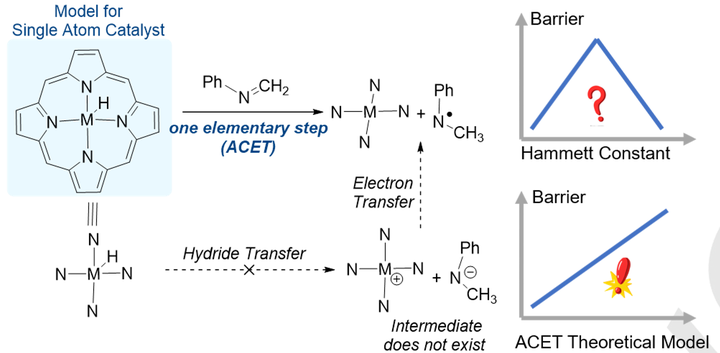Addition Coupled Electron Transfer (ACET)
 Using computational methods to design novel molecules
Using computational methods to design novel molecules
Although Proton-Coupled Electron Transfer (PCET) has been known as one of the elementary steps of the highest interests recently, it is unclear whether other reactions than proton transfer (PT) is able to couple with electron transfer (ET). The answer is, according to Ma’s series study, “YES”.
By studying several examples, either artificially designed or experimentally widely-used, it has been shown that an addition reaction into an unsaturated substrate can be coupled with an ET or even PCET event, leading to the novel elementary steps named ACET and ACPCET. In the latest report, it has been shown that the single-atom catalyzed transfer hydrogenation of imine is an ACET, and a theoretical model has been proposed.
One open question in the field is the possibility of the coupling between a pericyclic reaction and an ET. If it could happen, the electron counting rule of pericyclic reaction might be changed. In one of the works, Ma has shown that the formal Diels-Alder reaction between unactivated substrates can be activated by an ET, leading to stepwise ACET mechanism. Further researches are ongoing to design and validate other ACET reactions and so-based synthetic methodologies.



